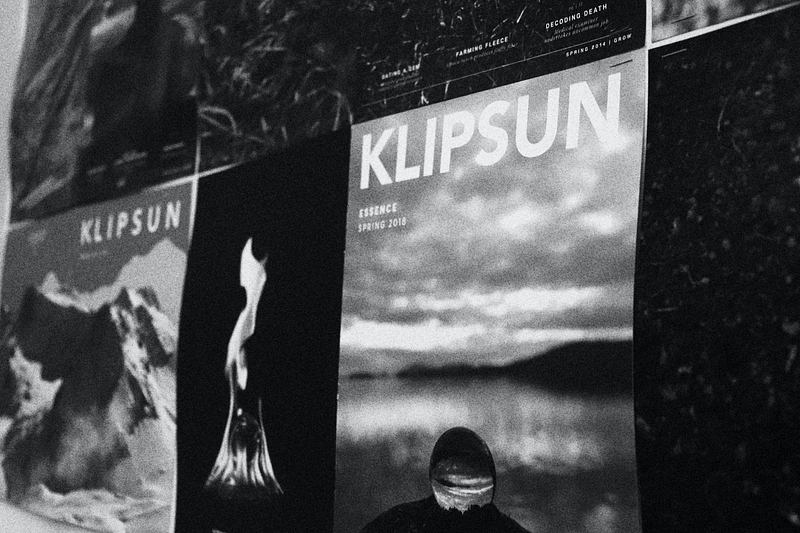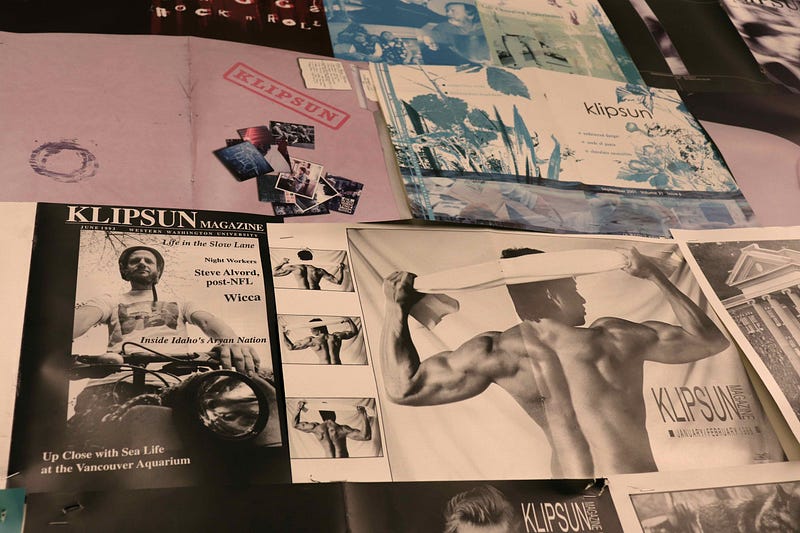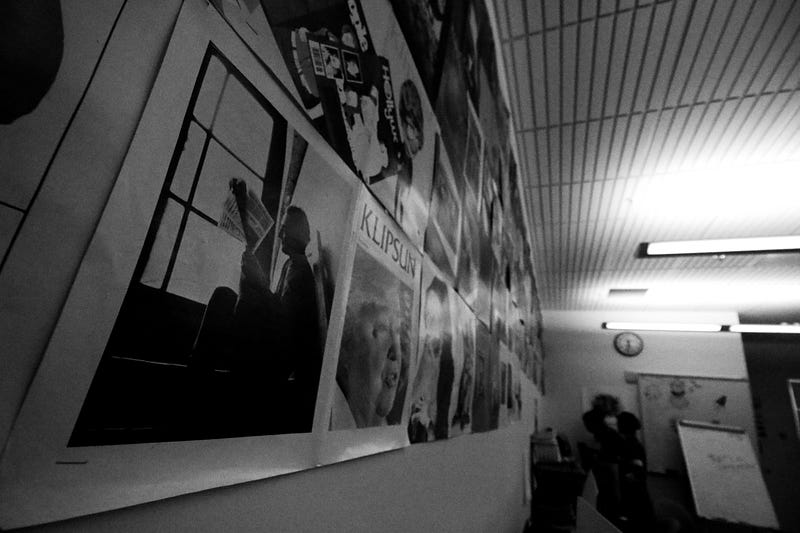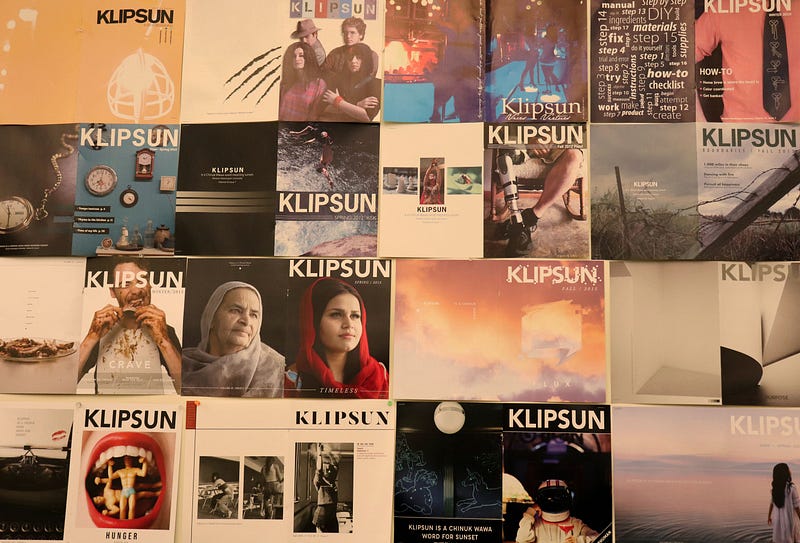Looking Back and Moving Forward

Three former editors of Klipsun Magazine describe their experiences while on staff through two influential periods in history: post 9/11 and the beginning of the COVID-19 pandemic.
Story by Mallory Biggar
In a tiny newsroom closet in Skagway, Alaska, Jennifer Collins woke up in her fold-out bed to a strange radio report. She wouldn’t see footage of the Twin Towers falling until much later in the day. That fall, Collins returned to Western and began her tenure as editor-in-chief of Klipsun Magazine. The issue her team produced, aptly titled “The Ripple Effect,” detailed the stories of those in the community who were affected deeply by the attacks.
Today, Collins looks back at her journal and contemplates how this event shaped the rest of her life.
Erin Crumpacker, who later became her second in command and partner in production, was about to leave for work at Barnes & Noble at the Bellis Fair Mall when she saw the tragedy on the news. She was taking summer classes at the time, and come fall, she would bring the experiences of that day with her to Klipsun as the managing editor.
“It was very, very strange,” Crumpacker said. “I remember sitting in a bar that night, and it was totally silent, and everyone was watching the TV.”
Working on the post 9/11 issue
“[I was] looking back at some of my papers at that time.” Collins said. “I wrote a number of papers and feature stories about the impact on Muslims.”
She said she doesn’t remember much from her days as a Klispun editor, but there were a few stories that impacted her. One in particular, a piece called “Defending the Faith,” described how local Muslims dismissed myths about Islam after 9/11.
“I didn’t write the story,” she said, “but I remember feeling it was really, really important that we told that story.”
The article, in theme with the issue, demonstrated the effects on the Muslim-American community in Bellingham. The people in the story dispelled myths and rumors brought on by the terrorist attacks. Their voices became a hot commodity for non-Muslim outsiders seeking perspective, and the go-to for explaining Islam.
“Although [local Arab American Nadeem Israr] says people in Whatcom County have been kind and compassionate, the Sept. 11 attacks still have put him behind a microphone defending Islam,” the story reads.

Collins thumbed through papers she wrote for school at the time. She remembered thinking about the immense pressure the Muslim community must have felt after being constantly solicited for interviews and panel discussions.
She jotted down one quote from the article that particularly caught her eye: “I shouldn’t have to prove to my fellow Americans how good of an American I am, my actions should prove that.”
Crumpacker remembered it was important to their editorial team to give Muslim Americans a platform to tell their own stories. Without social media and today’s easy internet access, she said the focus was much more local than it might now.
“It was news that was developing,” she said. “We were kind of a feature literary magazine, and it was a little difficult given the small pocket of the world where we were, but we tried to do what we could, based on what we knew.”
Crumpacker said that, as a journalist, what has stuck with her to this day is a deep sense of empathy for those who are affected by life-changing events like 9/11.
“That’s how you connect to the people you speak with, and you have to be open-hearted,” she said.
Looking back at her journals, Collins realized that, while she had an enormous amount of empathy for those affected by the attacks, she was also greatly disappointed by the media and the narrative created after the event.
“I thought that I had feelings about Sept. 11, but I really had feelings about the way the U.S. reacted to it,” she said.
Fast-forward to the pandemic
In early March 2020, a cloud of confusion, frustration and fear spread rapidly around the world. At Western, the university cancelled in-person classes and moved finals online. On March 13, President Sabah Randhawa announced via email that spring quarter would be delayed, but on-campus classes were expected to return in late April.
That was not the case.
Audra Anderson reigned as Klipsun’s editor-in-chief from a computer screen.
“It was just chaotic at first, because no one really knew what was going to be happening,” she said. “Nobody knew how long it was going to last. The saying is so cliche now, but it was new and unprecedented.”
Editorial meetings didn’t consist of spirited conversations about ideas for the upcoming issue, but were replaced with discussions on how to make things work given the uncertainty.

In the beginning, Anderson said the most difficult part of the process was unlearning everything she had spent the previous four years trying to master. In-person interviews were no longer a possibility, let alone a priority, and a print issue was unlikely. The things Anderson had dreamed of after landing the job were virtually out of the question.
“We were really concerned about participation and just teaching effectively, and making sure that the students felt supported when we had all been so used to doing that in person,” Anderson said. “With my team, a lot of it was trying to figure out creative ways to make Klipsun engaging digitally.”
Many stories included in the Spring 2020 issue of Klipsun centered around the pandemic — which Anderson said she expected and encouraged — but she didn’t want it to occupy the entire issue. She was looking for a balance between what was consuming everyone’s day-to-day lives and stories that would remain relevant after the pandemic.
“[April 2020] was so early in the pandemic. That was when the pandemic was in its infancy. And we were already talking about COVID-19 exhaustion,” she said. “Now looking back is just almost laughable to me, because it was still valuable, certainly, to report about stuff like that at the time.”
One story in the issue, “Thank You, Come Again,” shed light on the worsening discrimination Asian Americans faced during the pandemic, an experience that parallels the discrimination Muslim Americans faced after 9/11.
The article discussed episodes of vandalism and blatant racism experienced by Asian businesses around Seattle.
The son of an Asian American business owner told reporter Maks Moses that during the lockdown, they would receive a seemingly normal takeout order, only to be asked if the restaurant “served bat.”

Moving Forward
Crumpacker wonders what it would have been like to report on 9/11 with access to the technology available today. The pandemic will have a long-lasting impact on our lives, as will increasingly accessible information and technology, she said.
Anderson was one of many students who graduated that spring without ever setting foot on campus again. She is currently working at a small community newspaper in North Dakota.
Looking back, she realized her time as editor-in-chief under lockdown better prepared her for a career in journalism, as it forced her to adapt to a completely virtual setting without the familiarity of in-person reporting.
“I think it’s easy to get disillusioned in this field, especially outside of college, because it is such hard work, especially local community journalism,” she said. “I’ve accomplished a lot since being in this position. So I feel like I’m moving forward, which I think is the most important thing for me.”
